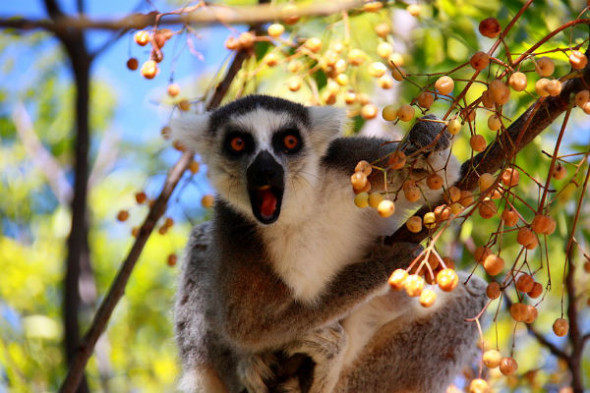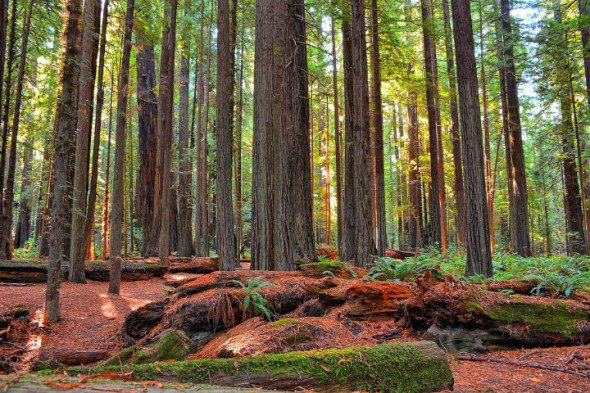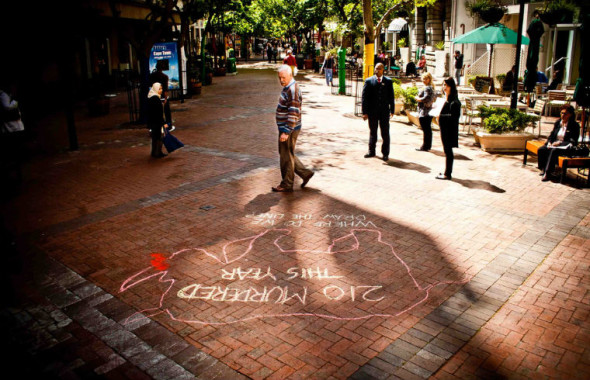TakePart | November 6, 2014
 More than 90 percent of Madagascar’s lemur population faces extinction. Now scientist say that could threaten the future of the African island’s rainforests.
More than 90 percent of Madagascar’s lemur population faces extinction. Now scientist say that could threaten the future of the African island’s rainforests.
What do lemurs do for rainforests? Poop in them. Because lemur droppings contain tree seeds, they’re one of Madagascar’s best tree farmers, according to a new study published in the journal Ecology.
The study tracked the seed dispersal behavior of the island nation’s largest lemurs and followed the growth of a rainforest tree called Cryptocarya crassifolia. The findings revealed that seeds dispersed via lemurs were 300 percent more likely to grow into saplings than seeds that just dropped onto the ground.
“Lemurs may play an important role as gardeners of Madagascar’s rainforest, but they are at risk of extinction across the island,” said Amy Dunham, an assistant professor of biosciences at Rice University.
Onja Razafindratsima, a graduate student of Dunham’s, was the lead researcher in the study. “Only by understanding what role they play in the ecosystem can we hope to understand what the consequences of their loss may be,” she said.
A Malagasy native, Razafindratsima conducted the study in Ranomafana National Park in Madagascar’s southeast region. She spent a year following 24 groups of lemurs to figure out where they were dispersing seeds in the rainforest and noted the amount of sunlight that fell through the rainforest canopy. She then studied how those habitats affected the probability of seeds sprouting and thriving.
“One particular lemur species—the red-fronted brown lemur—tended to drop seeds away from parent trees in places where there’s opening in the rainforest canopy,” Razafindratsima said. The red-fronted brown lemur also tended to eat more seeds than its lemur brethren, making the species the most effective at seed dispersal, she said.
The other two lemur species studied, the southern black-and-white ruffed lemur and the red-bellied lemur, also promoted rainforest growth by moving seeds away from the parent tree—where competition for sapling resources is fierce, and chances of seedling development are lower.
“These two lemur species greatly enhance the recruitment of this tree species and its ability to regenerate,” Dunham said.
But knowledge of how important the species is to Madagascar’s rainforests doesn’t change the grim prognosis for the declining lemur population, which faces habitat loss from slash-and-burn agriculture and hunting.
“Some of the actions that need to be done would be to protect more forest habitat, to increase regulations on mining and wood extraction, and to provide alternatives to slash-and-burn agriculture,” said Razafindratsima.
In February, a group of lemur conservationists published an article in the journal Science recommending local actions to address the population decline. Those included increasing protected areas managed by local communities, promoting greater ecotourism in Madagascar, and increasing the presence of field researchers.
While conservation is key, Razafindratsima and Dunham believe there needs to be a balance between lemurs and the needs of local villagers, who they say use slash-and-burn techniques on the rainforest to grow food to feed their children.
“It’s a difficult problem, because we have to consider not just the animals but the people who live around the rainforest,” Dunham said. “We need to be sensitive with both people and animals while we figure out ways to conserve there as well.”
Photo of lemur in Ramonafana National Park by Yves Picq via Wikimedia Commons

